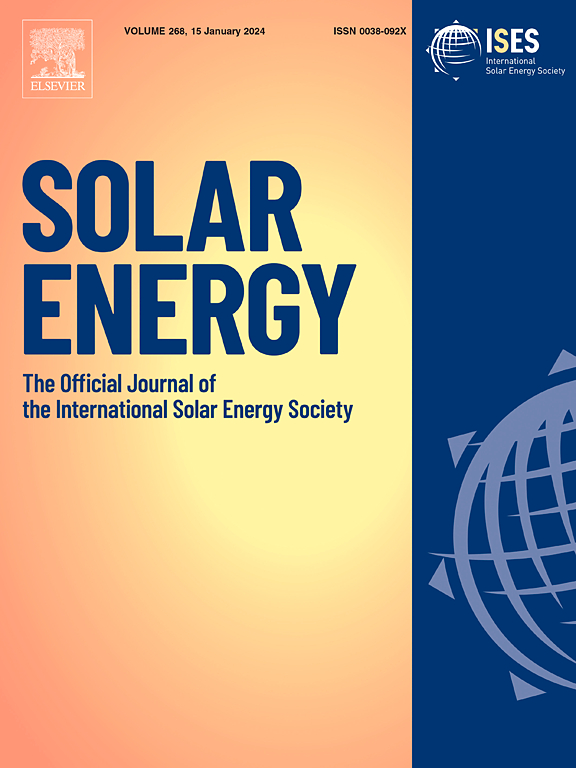Srlife:一个估算高温聚光太阳能接收器寿命的软件工具。第一部分:金属接收器
IF 6
2区 工程技术
Q2 ENERGY & FUELS
引用次数: 0
摘要
本文介绍了一种估算高温下聚光太阳能(CSP)接收器结构使用寿命的工具srlife。srlife支持金属和陶瓷接收器设计,可以在https://github.com/applied-material-modeling/srlife上作为开源软件获得,并可以通过PyPi包管理器(https://pypi.org)安装。给定接收器的基本几何形状和入射热通量,该工具可以进行热液压和结构分析,并估计接收器的寿命。该工具易于集成到软件堆栈中,包括太阳能场和平均成本分析,可用于优化接收器设计,以满足使用寿命和经济目标。本文是由两部分组成的系列文章的第一部分。第一部分讨论了用于估计金属接收器寿命的分析过程,以及对所需输入数据的描述。此外,与完整分析相比,在srlife中应用的几种启发式方法可以显着减少分析时间,同时保持金属接收器的准确寿命估计。文中还讨论了几个例子,说明了srlife在接收机设计中的应用。第二部分着重于陶瓷接收机的寿命估计,使用时变可靠性分析和在srlife中实现的各种陶瓷失效模型。本文章由计算机程序翻译,如有差异,请以英文原文为准。
srlife: a software tool for estimating the life of high temperature concentrating solar receivers. Part I – metallic receivers
This paper introduces srlife, a tool for estimating the structural service life of concentrating solar power (CSP) receivers operating at high temperatures. Supporting both metallic and ceramic receiver designs, srlife is available as open-source software at https://github.com/applied-material-modeling/srlife and can be installed via the PyPi package manager (https://pypi.org). Given basic receiver geometry and incident heat flux, the tool performs thermohydraulic and structural analysis and estimates the life of a receiver. Designed for easy integration into a software stack, including solar field and levelized cost analysis, the tool can be utilized for optimizing receiver designs to meet service life and economic targets. This paper is Part I in a two-part series. Part I discusses the analysis process used to estimate the life of metallic receivers, along with a description of the required input data. Additionally, several heuristics applied within srlife can reduce analysis time significantly while maintaining accurate life estimations for metallic receivers when compared to full analyses. Several examples demonstrating the utility of srlife in receiver design are also discussed. Part II focuses on the life estimation of ceramic receivers, using time-dependent reliability analysis and various ceramic failure models implemented in srlife.
求助全文
通过发布文献求助,成功后即可免费获取论文全文。
去求助
来源期刊

Solar Energy
工程技术-能源与燃料
CiteScore
13.90
自引率
9.00%
发文量
0
审稿时长
47 days
期刊介绍:
Solar Energy welcomes manuscripts presenting information not previously published in journals on any aspect of solar energy research, development, application, measurement or policy. The term "solar energy" in this context includes the indirect uses such as wind energy and biomass
 求助内容:
求助内容: 应助结果提醒方式:
应助结果提醒方式:


